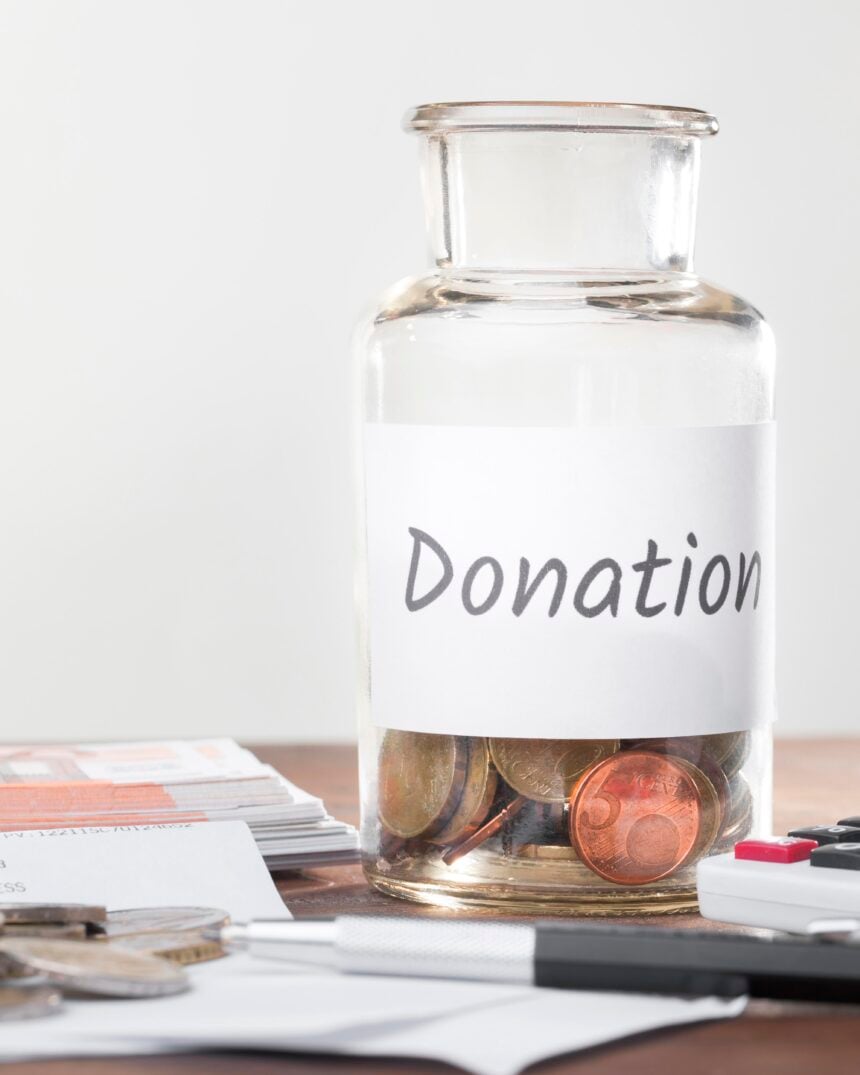Small dollars just got loud. The surge in micro-donations is rewriting campaign math—shifting power from VIP fundraisers to everyday people tapping “give” between classes, shifts, and subway stops.
Why micro-donations matter now (and what counts as “small”)
The traditional donor dinner isn’t dead—it’s just no longer the only game in town. A wave of micro-donations has turned the internet into a distributed fundraiser, where $3 and $7 gifts can outrun a ballroom gala when they arrive by the thousands. This isn’t only about money; it’s about participation. Small-dollar giving lets supporters signal “I’m in” with a click—and campaigns watch those signals like a stock ticker.
The legal definition and reporting rules
If you’ve ever wondered how campaigns sort “small” vs. “large,” the rules are public and clear. The FEC explains how small contributions are defined and reported, what gets itemized, and what appears as “unitemized contributions.” Those definitions shape everything from disclosure to data dashboards, and they’re essential for understanding why some numbers look fuzzy to the casual reader.
From spare change to campaign muscle
“Micro” used to evoke a tip jar; now it’s a scalable fundraising engine. For a neutral, big-picture primer, see Wikipedia’s overview of micro-donations, which traces how small gifts moved online and became a political force. The simple takeaway: the lower the friction to give, the faster these gifts pile up—especially when a viral moment hits.
A TikTok user: “I skipped a latte and sent $3—wild how fast small donations add up.”
Social media is the spark: from viral moments to $1 surges 📱
If fundraising emails are the old-school workhorse, social video is the nitro boost. A sharp clip, a debate zinger, or a grassroots milestone can trigger “micro-waves” of giving that spike in minutes, then cascade through the day as reactions and stitches multiply.
Where donation links actually convert
Not all platforms are equal for conversion. Real-time discourse drives urgency, and side-by-side conversations help causes ride the moment. For a feel of how these arenas function, our explainer on real-time debates and viral trends on X and Threads shows why some messages sprint while others jog; that velocity translates into donation spikes when a link sits one tap away.
What TikTok engagement really amplifies
The Brennan Center digs into the promise and limits of the small-donor wave. Their analysis of the 2020s small-dollar boom highlights both democratic energy and potential distortions—like rewarding outrage over persuasion. It’s important context for viral fundraising asks; see the research on political engagement patterns to separate hype from the hard questions.
A Redditor: “Micro-donations feel like a vote between elections—low cost, real impact.”
The new campaign playbook: data, cadence, and trust
Campaigns now “merchandize” urgency without burning trust. It’s a delicate dance: steady beats of relatable moments, transparent goals (“we need 4,000 $5 donors by midnight”), and rapid feedback loops (“you did it!”). The best ops teams treat small donors as stakeholders, not ATMs.
Measuring momentum in small-dollar waves
When staffers talk momentum, they’re watching small-dollar charts. The OpenSecrets small-donor tracker shows how those gifts stack up across cycles and candidates—useful for decoding whether a “viral” appeal actually moved the needle. It also helps compare campaigns courting broad bases vs. those leaning on larger checks.
Transparency checkpoints for readers and reporters
Healthy micro-fundraising cultures thrive on receipts—literally. Reviewers often sanity-check claims against FEC guidance for individual contributions, which anchors press coverage in what campaigns must disclose and what remains aggregated. That distinction matters when headlines tout “record” small-donor totals.
An X user: “Campaigns are finally talking to small donors like actual stakeholders.”
Case patterns: when $5 beats a fundraiser 🧩
So when do micro-donations outperform traditional events? Patterns keep repeating:
- News-driven spikes: A debate moment, a court ruling, or a legislative vote ignites a 24–48 hour surge.
- Community challenges: Grassroots drives that ask for symbolic amounts—$1, $3, $7—build identity as much as cash.
- Match psychology: “Your $5 unlocked another $5” nudges fence-sitters over the line.
What the numbers say (and don’t)
Aggregate figures can mislead. A campaign flush with small donations isn’t automatically persuasive to undecided voters; it might be superb at mobilizing its base. The Brennan Center’s data context on micro-donations growth offers the nuance: more participation is good; but emotional incentives can skew toward the loudest messages.
Where this trend could stall—or scale
Micro-giving thrives on trust, novelty, and momentum. Fatigue sets in when asks feel constant or cynical. To scale sustainably, campaigns must convert donors into community: updates that show tangible use of funds, volunteer opportunities, and policies explained in plain language. Wikipedia’s overview of micro-donations is a helpful historical compass here: formats evolve, but the principle—make it easy and meaningful—stays stable.
How to spot authentic micro-donation drives (and avoid spam)
You don’t need a forensic lab to vet a link—just a routine:
- Follow the money: Check the OpenSecrets small-donor tracker or candidate dashboards for consistency with the claim.
- Confirm the committee: Is the page a campaign committee, party committee, or PAC? Each has different rules and uses for your dollars.
- Look for specificity: Real campaigns tie asks to line items (field offices, ballot access fees, voter protection hotlines).
- Opt-out clarity: Reputable donation pages explain recurring toggle defaults and how to cancel.
- Match fine print: Confirm that “matches” are from verified pledges, not fuzzy math.
Scammers imitate urgency; authentic drives withstand scrutiny. If in doubt, go directly through campaign or party sites rather than third-party links circulating in comments.
Micro-donations and movement-building: beyond the receipt
Small-dollar giving isn’t just fuel; it’s feedback. Campaigns read donation timestamps, geos, and average amounts as signals of which messages resonate. That intel shapes ad creative, field scripts, and where the candidate shows up next. In other words, a $5 gift can redirect a bus route.
There’s also a cultural shift underway: small donors expect a seat at the table. They want updates, not boilerplate; Q&As, not platitudes. Treat them well and they’ll give again (and volunteer). Treat them like a spreadsheet line and the well runs dry.
The tech stack behind the surge
What makes micro-giving so immediate?
- Frictionless payments: One-tap wallets, stored info, and autofill convert intent to action in seconds.
- Link ubiquity: QR codes at rallies, links in livestream lower-thirds, and pinned comments turn hype into habit.
- Data loops: Real-time dashboards tell comms teams what to amplify, where to follow up, and when to dial back asks.
- Compliance rails: Good platforms nudge donors to add required info (occupation, employer) and streamline FEC-compliant exports.
The result is a system where a single viral clip can summon thousands of micro-donations in an hour—with receipts that flow cleanly into disclosures.
Strategy notes for campaigns (and curious citizens)
- Honor the moment, respect the donor: Pair every surge ask with a “here’s how we’ll use it” receipt later.
- Rotate the messenger: Supporters respond to voices they recognize—organizers, local leaders, not just the candidate.
- Test the amount anchor: Sometimes $3 beats $10; other times $7 hits better. A/B test the button labels, not just the pitch.
- Educate in public: Cite the rules and norms. When you reference how small contributions are defined and reported, you build trust and inoculate against misinformation.
Keep exploring the social engine behind micro-donations
Want to see how discourse dynamics shape these waves in real time? Our breakdown of real-time debates and viral trends on X and Threads maps the rhythms that often precede small-dollar spikes. And if you’re deep in the numbers, track patterns over time with the OpenSecrets small-donor tracker to benchmark claims you see on your feed.
FAQ
What defines a micro-donation?
In U.S. politics, micro-donations usually refer to small-dollar gifts—often under $50. Disclosures follow FEC rules; see how small contributions are defined and reported for what campaigns must show.
How do micro-donations influence political campaigns?
Micro-donations power rapid-response budgets, signal message resonance, and grow volunteer pipelines. Public trackers like the OpenSecrets small-donor tracker help measure the impact.
Why are micro-donations gaining popularity?
Lower friction (one-tap wallets), viral distribution (short-form video), and community identity all boost micro-donations. Research like the Brennan Center’s research on political engagement patterns explores the upsides and trade-offs.
How can I participate in micro-donations safely?
Give through official committee pages, review recurring settings, and sanity-check claims against FEC disclosures and the OpenSecrets small-donor tracker. Small gifts add up—transparency keeps them effective.








